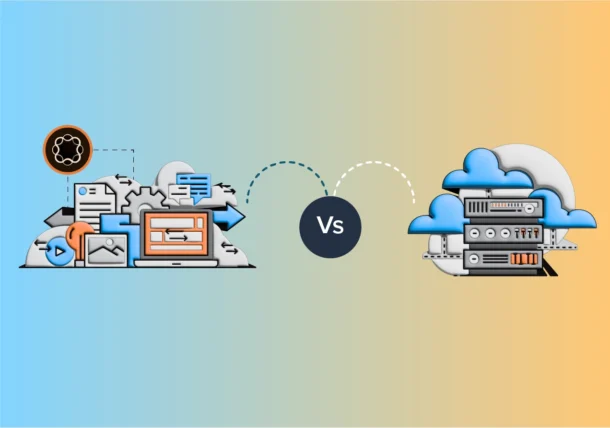Fathoming Adobe Experience Manager by Displaying Multisite’s Crucial Role and Intent
Adobe Experience Manager (AEM) is a powerful content management system that enables businesses to easily develop, oversee, and distribute digital experiences across many platforms. Multisite management is essential to AEM because it lets companies effectively manage several websites, brands, or geographical areas on one platform.

Organizations with a variety of digital footprints need multisite management in AEM to assure brand consistency, expedite content production, and maximize resource use. It enables centralized management of processes, templates, and content, improving scalability and efficiency while cutting down on overhead.
The key to AEM multisite manager is emphasizing its importance and examining how it meets the changing demands of contemporary companies. Organizations may use AEM’s multisite management tools to promote efficiency, consistency, and agility in their digital initiatives by knowing their capabilities and advantages.
The goal of this blog is to explore the nuances of multisite management in AEM, offering practical applications, best practices, and functionality. Businesses may realize the full potential of AEM multisite management and take the first steps toward achieving digital excellence by deciphering its complexity.
Surveying Features, Benefits, and Traditional Comparisons of AEM Multisite Manager
Comprehending AEM Multisite Manager is vital for enterprises looking to enhance their online visibility and simplify content administration across numerous locations using Adobe Experience Manager (AEM). Understanding how Multisite Management in AEM works to help users effectively manage numerous websites or digital properties inside a single AEM instance is the first step in explaining the capability. To guarantee consistency and scalability across several sites, it entails arranging information, templates, and assets in an organized way.

Gaining knowledge about AEM Multisite Manager’s capabilities may be achieved by going over its main functions and advantages. These consist of procedures that expedite the processes of content production and deployment, reusable templates, and centralized content management. Furthermore, AEM Multisite Manager provides strong reporting and analytics features, enabling users to monitor performance indicators across several sites and make informed decisions.
AEM Multisite Manager’s benefits are highlighted when compared to more conventional site management techniques. AEM Multisite Manager provides a consolidated platform for managing many sites, in contrast to conventional techniques that call for separate installations or instances for each site. This leads to cost savings, streamlined maintenance, and improved cooperation. Moreover, AEM Multisite Manager offers increased adaptability and agility, enabling businesses to promptly adjust to shifting market trends and business needs.
It is important to investigate the features, advantages, and distinctions of AEM Multisite Manager in comparison to conventional site administration methodologies. Businesses may increase operational effectiveness, simplify content administration, and create unified, captivating digital experiences across several websites in the Adobe Experience Manager network by utilizing the features of AEM Multisite Manager.
AEM Multisite Manager’s Impact on Content, Resources, and Performance
By centralizing resources and workflows, maximizing performance and scalability, and harmonizing content management across several sites, Adobe Multisite Manager transforms operational efficiency. Simplifying the process of creating, editing, and publishing content ensures consistency and accuracy across all digital channels. material producers may manage material centrally using AEM Multisite Manager, which reduces presentational discrepancies and eliminates redundancy.

Streamlining processes and centralizing resources makes it easier to generate and distribute material in an organized manner. Teams work together more easily and maintain brand consistency when assets, templates, and workflows are consolidated. Version control is improved by this centralized method, making it possible to track changes and updates effectively.
Performance and scalability are guaranteed with AEM Multisite Manager. Because of its architecture, high-speed content delivery is prioritized, guaranteeing smooth experiences across all digital channels. Furthermore, strong scalability capabilities let businesses grow their online presence without sacrificing functionality.
For content administration, resource centralization, and performance optimization, AEM Multisite Manager is a crucial tool for optimizing operational efficiency. Organizations may attain agility, consistency, and reliability in their digital endeavors by streamlining content processes, centralizing resources, and improving performance. Enterprises can effectively handle multisite complexity and provide exceptional digital experiences with AEM Multisite Manager.
Guidelines, Governance, and Performance Analytics Across Multisites
Organizations must prioritize maintaining brand integrity throughout multisite environments, and AEM Multisite Manager is essential to accomplishing this. Businesses can guarantee uniformity and compliance throughout their digital domains by putting governance procedures into place, utilizing performance data, and putting brand rules into practice.
Ensuring that all digital assets follow the organization’s brand standards and messaging requires the implementation of brand guidelines across multisite environments. Organizations may centralize brand assets—such as fonts, colors, and logos—with AEM Multisite Manager, giving content authors easy access to them on all sites. By doing this, branding components are kept consistent and logical, strengthening brand identification and awareness.
Maintaining compliance and brand consistency requires the enforcement of governance and approval procedures. Strong workflow features are provided by AEM Multisite Manager, enabling businesses to specify permissions and approval processes with their governance guidelines. This reduces the possibility of unapproved or inconsistent content by ensuring that content is properly reviewed and approved before publishing.
Organizations can pinpoint areas for optimization and improvement by using monitoring and analytics, which offer insightful information on the functioning of multisite setups. By integrating AEM Multisite Management with analytics software, companies can monitor important performance indicators for each site, including engagement, traffic, and conversion rates. By using a data-driven approach, organizations may improve the efficacy of their digital properties by making well-informed decisions regarding user experience, site layout, and content strategy.
Through the implementation of brand rules, the enforcement of governance processes, and the use of performance data, AEM Multisite Manager enables enterprises to preserve brand integrity across multisite environments. In the digital sphere, firms can enhance their brand identification, foster audience trust, and propel commercial success by guaranteeing uniformity and adherence to regulations. Organizations may efficiently manage and improve their multisite settings for optimal impact and efficacy by utilizing the AEM Multisite Manager.
AEM Multisite Manager and Its Best Practices for Planning, Configuration, and Team Training
Following best practices in team training, configuration, and planning is essential for an efficient AEM Multisite Manager implementation. For an implementation to be effective, careful planning and architectural considerations are necessary. To create a scalable and adaptable architecture, organizations should evaluate their needs, taking into account factors like the number of sites, types of information, and user roles. It also guarantees that the execution is in line with the organization’s aims and objectives by taking into account elements like content hierarchies, site structures, and integration requirements.
AEM Multisite Manager configuration necessitates meticulous setup and modification to satisfy particular business requirements. Companies should take advantage of pre-built features and functionalities and also personalize components, templates, and workflows to meet their own needs. Furthermore, to ensure consistency and compliance across multisite settings, it is imperative to build effective content governance processes, define user rights, and configure replication mechanisms.
The effective use of AEM Multisite Manager by teams is contingent upon the implementation of training and adoption techniques. Teams are given the information and skills necessary to efficiently utilize and navigate the platform by providing comprehensive training programs that are suited to various user roles and skill levels. Furthermore, encouraging teams to experiment with cutting-edge features and best practices drives constant innovation and progress in multisite management. This is achieved by cultivating a culture of continuous learning and cooperation.
Following best practices for planning, configuration, and team building is essential to mastering AEM Multisite Manager. Organizations can optimize the benefits of AEM Multisite Manager and effectively accomplish their digital goals by methodically planning and architecting the implementation, customizing the platform to fit unique business requirements, and allocating resources for thorough training and adoption strategies. Organizations may maximize AEM Multisite Manager’s potential and develop multisite management skills to unprecedented levels by adopting a strategic approach and a dedication to excellence.
Exalting AEM Multisite Manager with Pattem Digital
By providing a thorough overview of its advantages, predictions for upcoming trends, and implementation support, partnering with Pattem Digital improves the use of AEM Multisite Manager. The synopsis emphasizes how the platform’s efficiency and consistency improve brand integrity and operational effectiveness across several sites. Future developments in scalability, personalization, and AI-driven analytics are indicated by trends in AEM Multisite Management, which bode well for additional innovation and optimization. Encouraging companies to use AEM Multisite Manager highlights how revolutionary it can be in fostering digital excellence and preserving a competitive advantage. Organizations can get AEM consulting services and achieve unmatched success in their digital endeavors by working with Pattem Digital as a trusted partner to help them negotiate the complexities of the platform.





